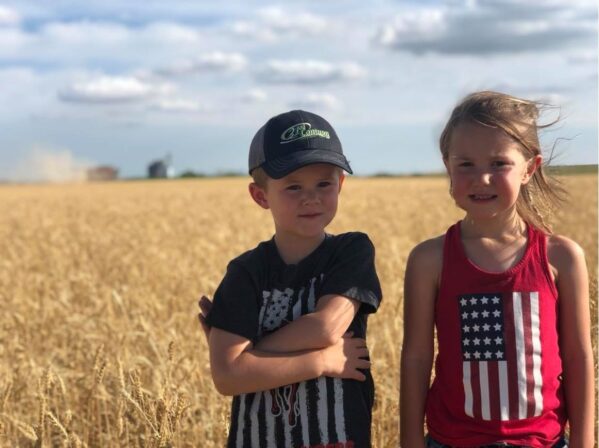Miles:
770
Visit a Wheat Farm
While you are stopped, learn about: shortgrass prairie
Sidney, Nebraska; Cheyenne County
A pinch of patience. A dash of vanilla. A spoonful of sugar. And a heap of chocolate. What could we be baking? Cookies! But we’re missing one important ingredient to make this sweet treat. What could it be? Wheat! Visit Clara’s farm in Sidney, NE to learn more about how wheat is grown and harvested in Nebraska.
Resources:
While you are stopped, learn about: shortgrass prairie
The Short Grass Prairie ecoregion found in Western Nebraska is an incredible area full of diverse topography, flora and fauna. The region’s slightly higher elevation and decreased precipitation compared to central and eastern Nebraska drives the type of plants and animal communities found here. The Short Grass Prairie ecoregion contains diverse topography, including several areas of rocky escarpments, sandsage prairie, sand prairie, pine woodlands, badlands, and other vegetation types. Soils range from sands to clays with a greater variety of soil types than other ecoregions in the state. Annual precipitation ranges from 12-17 inches. Short-grass prairies are dominated by grasses such as buffalo grass and blue grama. Common forbs in this prairie type include milk-vetches, scarlet gaura, cutleaf ironplant, prickly pear, and prairie-coneflower. The low precipitation in the Shortgrass Prairie Ecoregion, in conjunction with grazing, causes most short-grass vegetation to rarely exceed 10 inches in height.
More than 300 species of resident and migratory birds have been recorded in the Shortgrass Prairie Ecoregion. Common species could include the western meadowlark, grasshopper sparrow and lark bunting. The region’s wetlands support many species of waterfowl including Canada goose, mallard, and northern pintails among many several species of shorebirds.
A variety of mammals are known to occur in this ecoregion as well. Ungulates such as both white-tailed and mule deer, as well as elk, pronghorn and bighorn sheep. Mountain lions also have been recorded in this area as being the largest natural predator among coyotes and bobcats.
The aquatic habitats of Nebraska’s Panhandle support numerous species of fish. The region’s lakes and reservoirs have been stocked with game fish such as walleye, largemouth bass, white bass and bluegill. River-associated species include channel catfish, shovelnose sturgeon, western silvery minnow, plains minnow and several species of darters.
Many species of reptiles and amphibians are known to occur in the Shortgrass Prairie Ecoregion as well. Amphibians such as boreal chorus frogs and the Woodhouse’s Toad. Reptiles include bullsnakes, prairie rattlesnakes, lesser earless lizards, great short-horned lizards, and ornate box turtles.
The Shortgrass Prairie Ecoregion also has a wealth of natural amenities. This region is a known destination for the natural history enthusiast, hunters, anglers, hikers, and the casual visitor interested in varied scenery. This ecoregion is home to Lake McConaughy, the largest reservoir in the state and a well-known destination for anglers, bird watchers, hunters, and campers. The Pine Ridge also offers a plethora of wildlife viewing opportunities, trout fishing, hiking trails, equestrian trails, rock hunting and wildflower viewing opportunities.
Resources:
These buttons follow the default direction of each route. You can use the previous button to move in the opposite direction, or edit your team’s settings in the manager dashboard.







